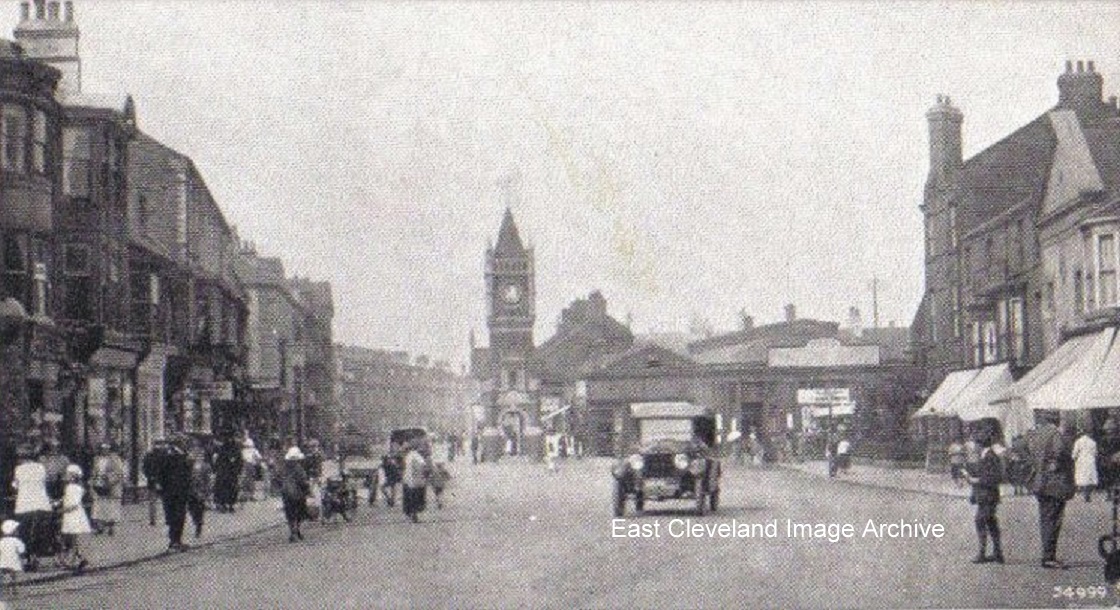
Rather strange to see a lonely car in the High Street at Redcar; especially as in more modern times this section is now pedestrian access.
Image courtesy of Mike Holliday.
|
|
||
 Rather strange to see a lonely car in the High Street at Redcar; especially as in more modern times this section is now pedestrian access. Image courtesy of Mike Holliday. 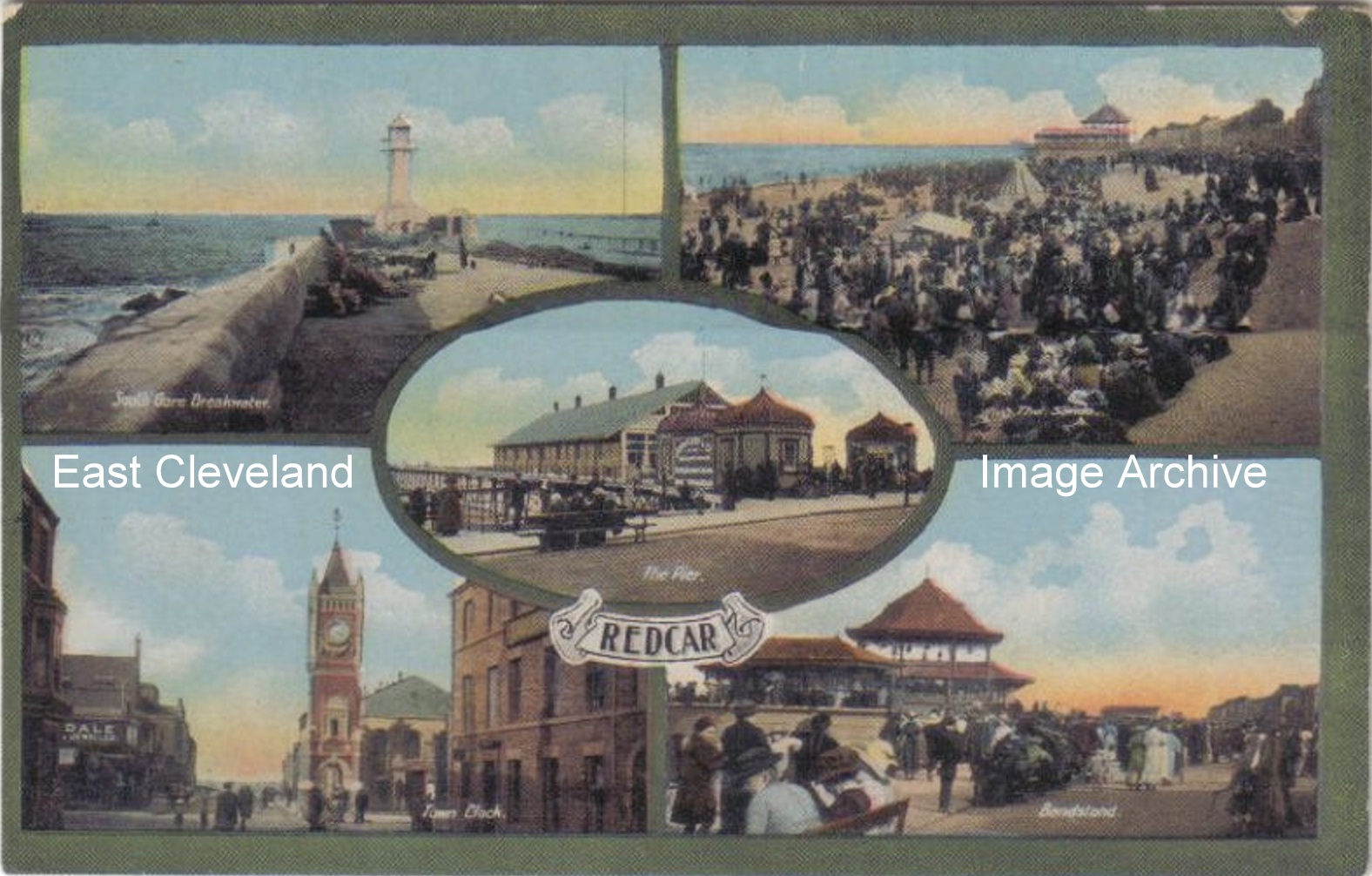 Coatham Pier and South Gare are both on this postcard which is quite unusual. Image courtesy of Mike Holliday. 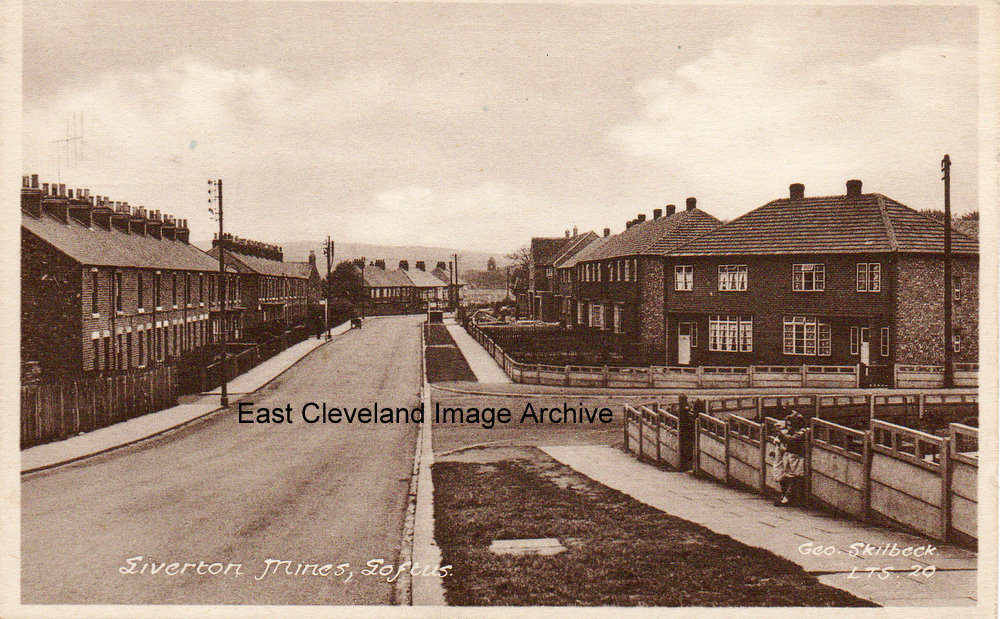 A lovely view down Liverton Road, with the council houses now built. Carolyn Mortimer advises: “this view shows houses at the top of the bank, built c.1937 – I was born at ‘Meadowfield’ so called – before the council houses were built! It has been an amazing journey going through all the photographs – thank you for all your efforts. My mother Rene Mortimer was church organist at St Helens in Liverton Mines for over 40 yrs and my father was Jim Mortimer, carpenter at the Coop in Loftus.” Danny Plews adds: “My Mum lived at the second house down before I went into the army in 1960.” Image courtesy of Ken Johnson, thanks to Carolyn Mortimer and Danny Plews for the updates. 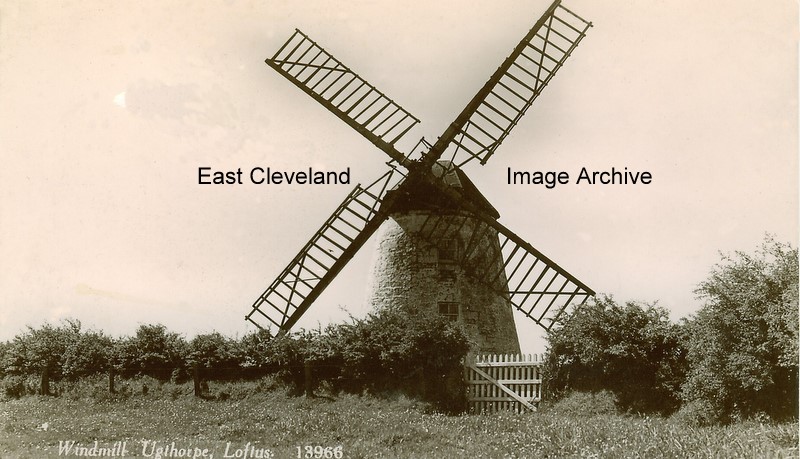 Yes I know it’s quite a way from Loftus but who could resist a lovely photo of the windmill at Ugthorpe, pictured in 1954 minus the canvas sails. A sight sadly missed today. The windmill was situated towards the moor road end of Ugthorpe. Geoffrey Powell tells us: “When I was stationed at RAF Goldsborough we had to do a Church run. When I was duty driver I had to take two runs to the two churches at Ugthorpe; one C of E and the other RC opposite each other. Then wait until the service was over and then bring the Officers or others back to the camp. Just along side Goldsborough camp we had married quarters. It was a devil in heavy rain getting to Ugthorpe as we had to venture across a ford!! Would love to know where the windmill was indeed situated. Happy days. I always said I would get married at Ugthorpe C of E, but was posted so did not happen 1961/2/3. How I would love to relive them with such infectious beautiful coastline one does not have to go to church to experience a taste of heaven.”
This view of Vaughan Street, North Skelton dates from about 1906; it is from a used postcard bearing that date. The original village hall is today replaced by a more modern building, whilst “Smarts Stores” is now the location of ‘Curly Tops’ hairdressing salon. However I would not suggest trying to stand with a wheelbarrow in the middle of the street today; traffic is more prolific and moves at a faster pace that then. Judy Last advises: “My grandparents Albert and Emma Tuck, ran Tuck & Thompson’s Grocers/Drapers (later Smart’s Stores) at 27 Vaughan Street and my grandfather was postmaster from about 1895 or before until 1901. My father, Alexander Tuck, was born above the shop in 1897. I know that my great grandparents, Edwin and Grace Tuck had a Grocer’s shop in Boosbeck by 1877 and had connections with North Skelton as well, so they may have owned the shop in Vaughan Street” Peter Appleton adds information with: “I was alerted a 4d Tuck& Thompson token by the property owner, who was doing some renovation work. Tuck & Thompson had a grocery business in North Skelton. I am presuming that this would have been part of a miner’s wages and could only be redeemed in Tuck & Thompson’s shop. An attempt to ensure that the miner didn’t spend all his earnings on the three B’s (booze, baccy and betting).” Image courtesy of The Pem Holliday Collection and Derick Pearson, thanks also to Peter Appleton for the information on Tuck & Thompsons token system.
How things change! This view from Grove Road over the allotments gives a view of the back of the Co-operative building (now finally gone!), Hutton Street shops are no more, today even the allotments are gone. But the new houses on the High Street are clearly visible, can any one assist with a date? Image courtesy of the Pem Holliday Collection. 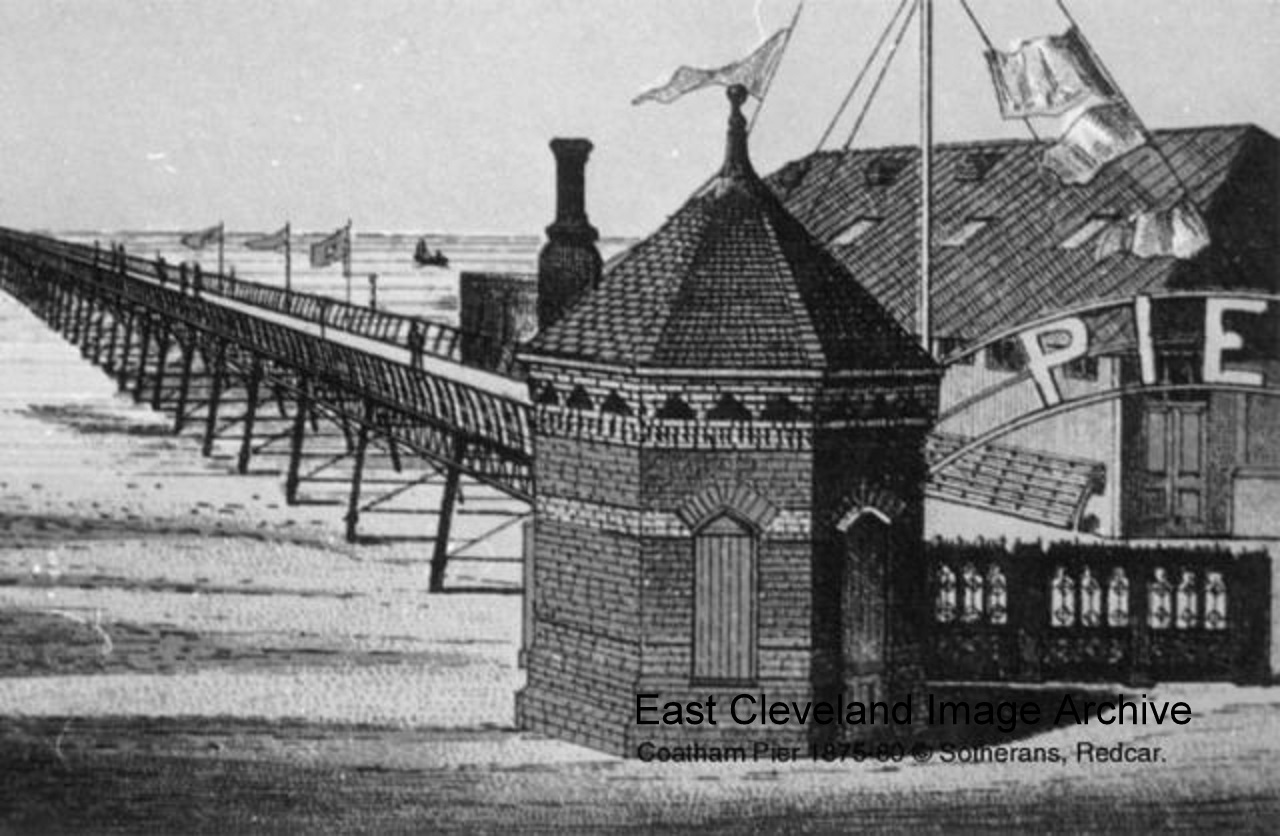 Another lovely pier long gone; the Archive now has further information on this pier from: ‘Yorkshire Piers’ author Martin Easdown. He tells us ”Coatham Pier had actually opened to the public in 1872 and was fully completed in 1874 to a length of 2,250ft before it was hit by the ‘Griffin’ and ‘Corrymbus’ in December 1874. The pier was repaired but was wrecked by storms in December 1876 and was shortened to 1,770ft. The pier was demolished in 1899 after being cut in two by the ‘Birger’ in October 1898.” Image (from a postcard produced by Peter Sotheran) courtesy op Mike Holliday, thanks to Martin Easdown for the update. 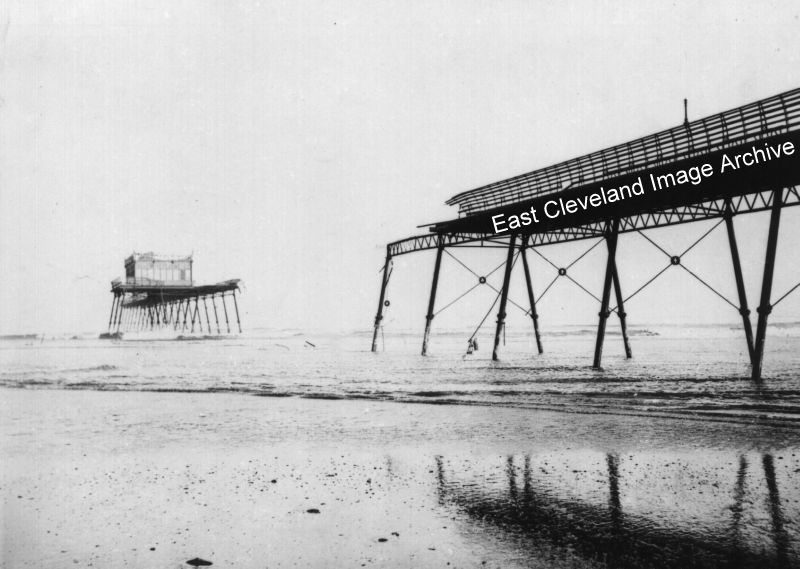 Now the way I look at this it is Coatham pier cut in two, do you agree? How great Redcar would have looked today with two magnificent piers. Fred Brunskill advises us: ”Originally Coatham Pier was to be much longer than Redcar pier with a glazed ballroom pavilion in the centre. Unfortunately before the seaward side of the pavilion could be completed it was breached in 1874 by the brig ‘Griffin’ and had to be abandoned. During the same storm the ‘Corrymbus also breached the pier causing much more damage. The final straw was in 1898 when the Finnish barque ‘Birger’ tore out a hundred yard section leaving the pavilion isolated. Repairs were too costly and the the pier was partly dismantled and left for many years. Not being able to meet their debts the Pier company ceased trading the following year.” Rev. Neil McNicholas asks: “On p11 is a picture of Redcar Pier with, as you can just make out, criss-cross bars underneath – as in this picture. So is this Redcar Pier rather than Coatham?” Further investigation reveals that above the cross-bars there are smaller cross-bars on the Coatham pier. Image courtesy of Mike Holliday, thanks to Fred Brunskill for the update and to Rev. Neil McNicholas for the enquiry. 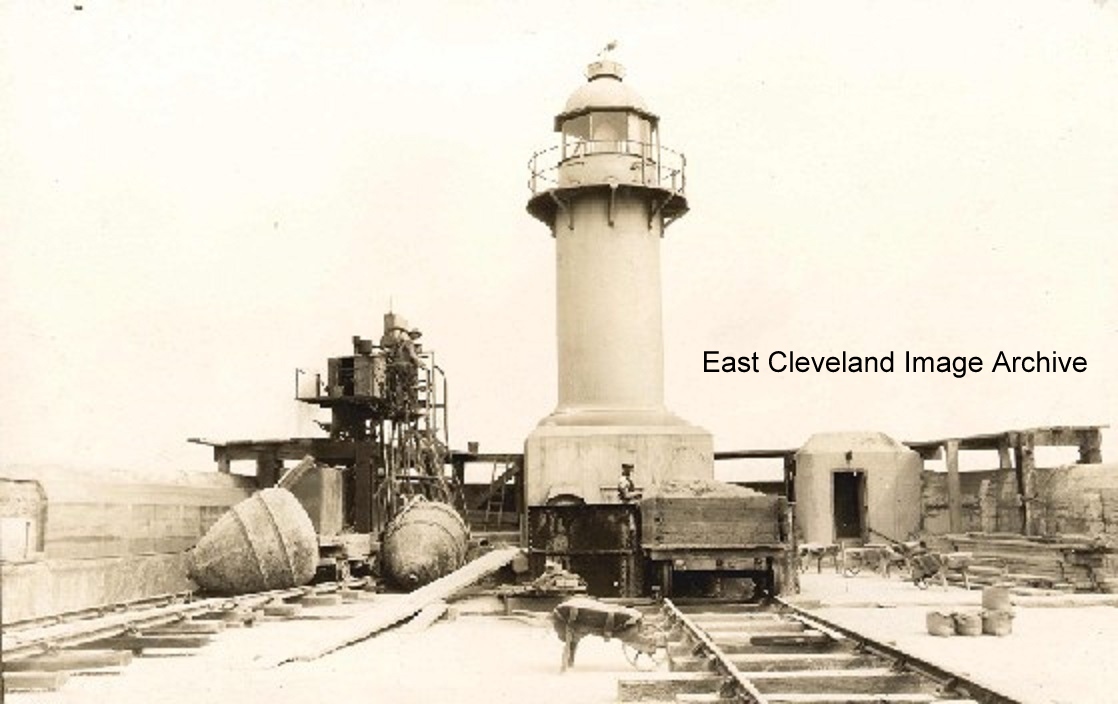 Opened in 1888 the Gare is two and a half miles long and cost £219,300 to construct of slag provided by the local ironworks who also contributed to the transport costs. The Stockton & Darlington Railway Company constructed a line from the blast furnaces at Cargo Fleet to the Tees Conservancy Commissioners’ Railway at Tod Point to transport the slag. During the opening ceremony of the South Gare the line was put to an unusual use as trains from Middlesbrough took special guests to the base of the lighthouse. Later, as there were no trains running on the track, workmen boarded a flat bogey propelled by a sail. Other images of the sail trains can be seen on the Archive. Image courtesy of Mike Holliday, information courtesy of ”South Gare” a Cleveland Urban Fringe Scheme publication. Also featuring in ‘Lighthouses of the North East Coast’ by Robin Jenkins. 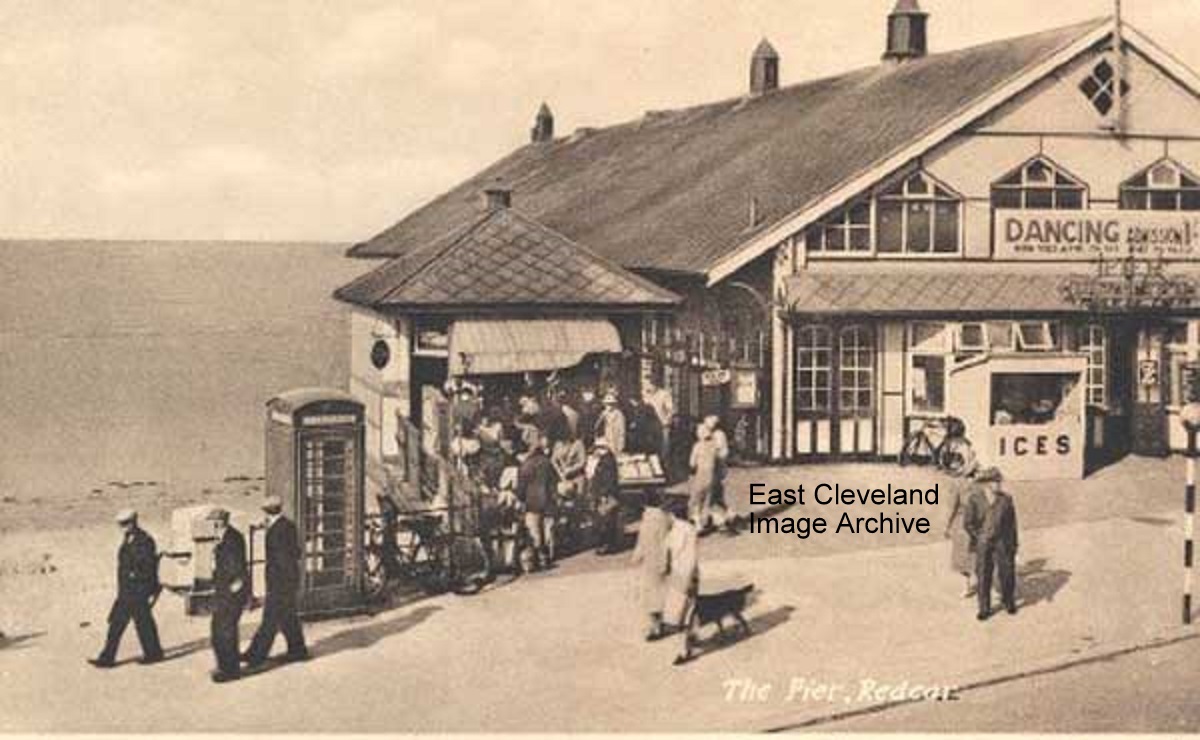 I remember this too and many happy hours here dancing. The beautiful pier has gone and all that remains is this building. The image taken it is believed from a postcard is possibly from the late 1940s or 1950s. Callum Duff advises: “There doesn’t look like there’s any structure beyond the shore end of the pier so late 1940’s – early 1950’s is a reasonable estimate. This is a photograph of Redcar Pier Pavilion which was completely demolished in 1981 and not to be confused with The Regent Cinema, built over the entrance of Coatham Pier which is currently being re-developed.” Alan Franks tells us: “I used to go here in the mid 1950s when I lived at Redcar as a young teenager; five Woodbines between two of us a lemonade and a glance from a girl we fancied and we went home happy.” Image courtesy of Mike Holliday, thanks to Callum Duff for the update and Alan Franks for the memories. |
||
Recent Comments